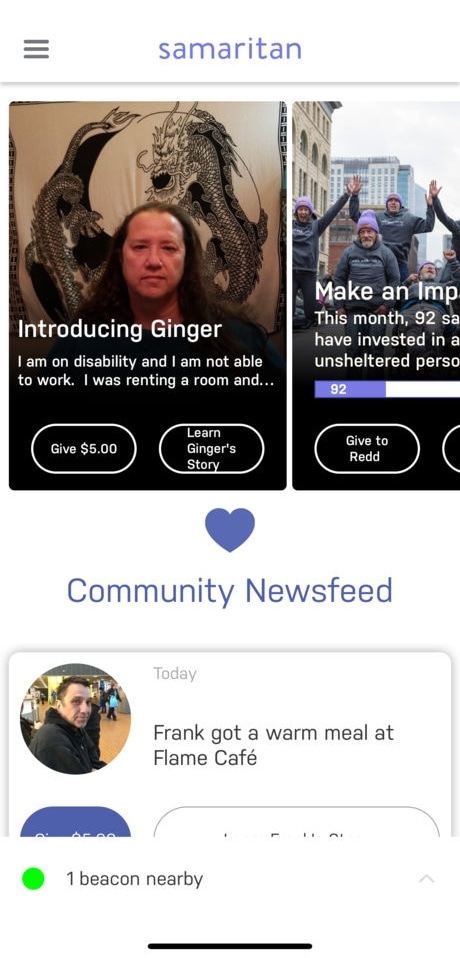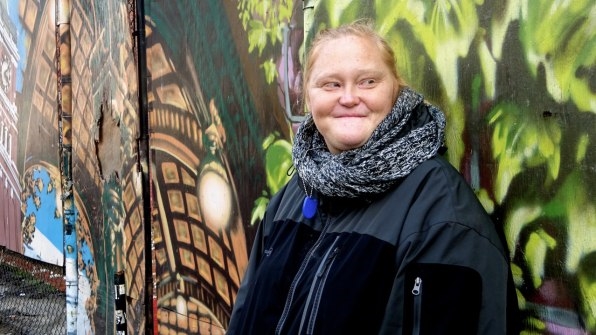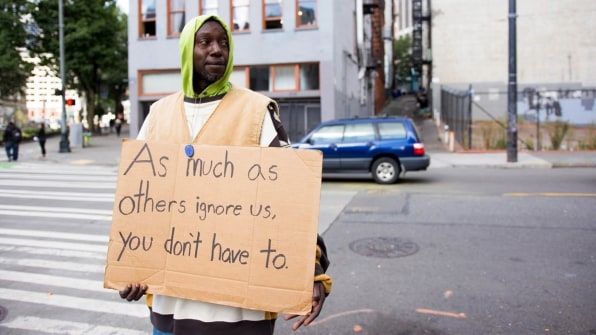While on a lunch break in downtown Seattle a few years ago, Jonathan Kumar watched as a homeless black man stood at an intersection with a sign saying that he needed medication for diabetes. As drivers passed, no one rolled down a window to offer a donation. “No one even acknowledged that he existed,” Kumar says.

Kumar walked over to the man and asked him about the challenges of trying to raise the money he needed. “He said, ‘I’ve got the wrong look for this, the wrong skin color, the wrong clothing. Nobody actually believes that I’m homeless.’ It was at that moment that I realized that this person wasn’t just experiencing financial poverty, but relational poverty; he couldn’t share his true need in a way that people could quickly understand and perhaps relate to.” Kumar, who was on the verge of leaving a tech startup, wondered if technology could help.
The result was Samaritan, an app that someone in need can choose to use by carrying a small beacon that they get from a clinic or a nonprofit counselor. When someone using the app walks by, they get a notification that shares the person’s name and story; if they choose to donate via the app, the homeless individual can use the funds at a few local partners: a grocery store, an outdoor supply store, a barbershop, and a coffee shop. Beacon holders get a text or email when they get a new donation, and if they don’t have access to either, they can check their balance at one of the stores. Merchants use the app to scan funds off the beacon.

[Photo: courtesy Samaritan]
The beacons are available through nonprofits such as Salvation Army, Compass Housing, or medical clinics; someone using a beacon can also bring it to a counselor and ask to apply the funds to something else, like a phone bill or a Greyhound ticket. Like merchants, a counselor uses the app to designate the purchase or issue cash or a prepaid card. (Despite not having free access to the funds immediately, Kumar says that people using the system haven’t said that this makes them feel distrusted.) Each month, when the battery runs low, someone will need to come back to the counselor to get a new battery if they’d like to keep using it. This connection also helps give people an incentive to meet regularly with social service providers, leading to more permanent solutions.
“We basically have seen that these monthly conversations over time build trust with that clinic or that counselor to the point where the clinic or the counselor is able to navigate them to a much better opportunity than the beacon, like recovery, like employment, like housing,” he says. “It’s a tool to build relationships, and when those relationships are established, good things happen, whether it be a paycheck or a safe place to stay. We’re just a small piece in the puzzle.”

In a pilot over the past two years, Samaritan gave out 500 beacons. More than half of the beacon holders reported making monthly visits because of the beacons, and 42 people said that their lives changed because of it. One man used donations to buy new work clothes and found a job; others used funds for transportation to work. A woman who had been evicted from her apartment began to meet with a counselor who helped her find a new home. Others built new relationships directly with the “samaritans” using the app.
Gimbal, a company that makes beacons that are more commonly used for promotions–someone might get an offer for a discount on a latte when walking past a coffee shop, for example–donated its technology to the project and is now funding an ad campaign for the Samaritan in Seattle. Samaritan now hopes to give 2,500 access to a beacon in Seattle by the end of 2020, and also plans to deploy beacons in nine other cities.
(34)